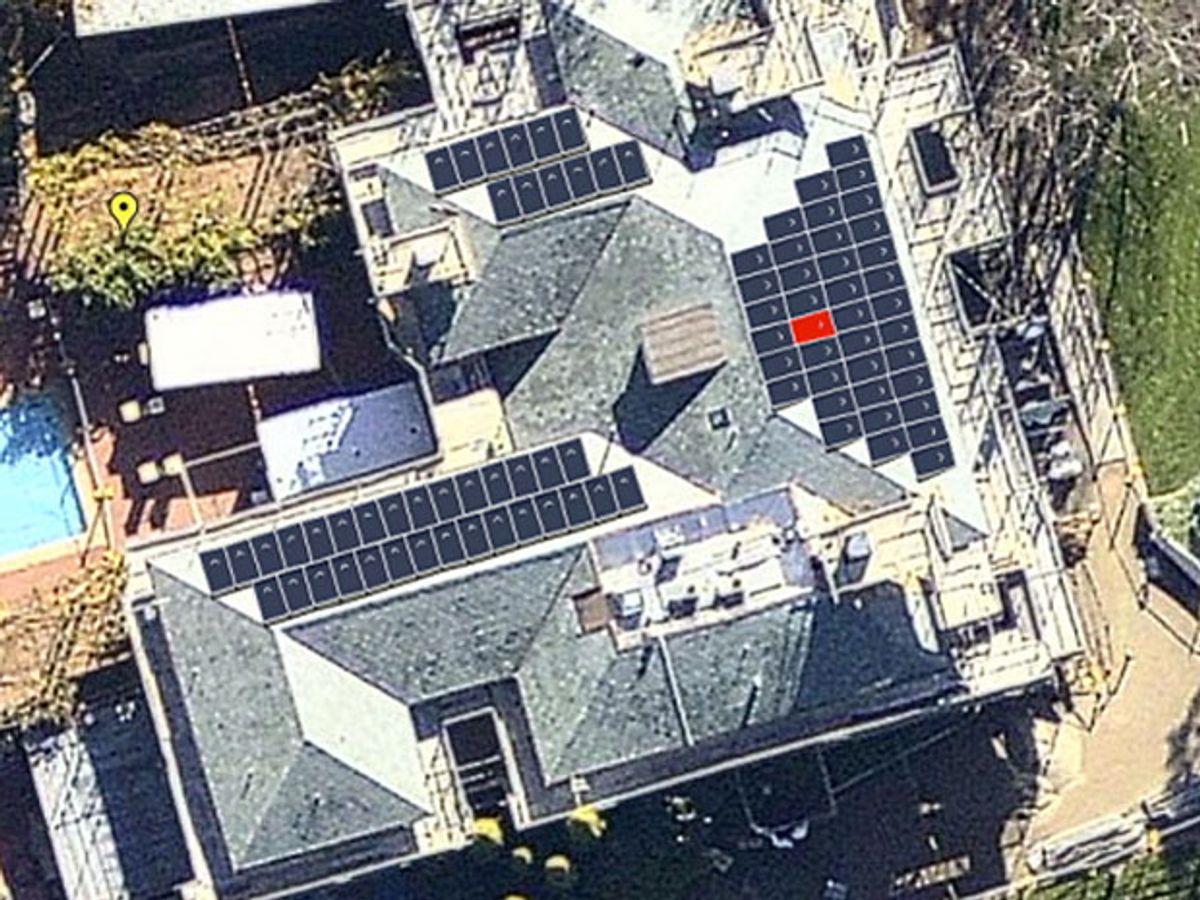When Australian activists conducted a spoof solar energy installation assessment for their climate change-doubting Prime Minister Tony Abbot's residence (“The Lodge”) last month, the intent may have been satirical, but the software they used is anything but. In fact, virtually simulating solar energy installations from afar has quietly become a commonplace in the solar industry, which is rapidly embracing big data.
So-called “solar analytics” has in recent years gone from an internet-era curio to nearly a competitive necessity, says Murray Hogarth, sustainable energy blogger and director of community energy networks for the Australian company Wattwatchers.
“That sort of use of data to decide what the system should be before installation occurs—before anyone even goes to the site—is now widespread,” he says.
So in the case of Prime Minister Abbott—whose climate-change denial has earned him international opprobrium—Australian climate activist group 1 Million Women consulted with the Chinese PV company Suntech Power and Australian company Solar Analytics to virtually outfit The Lodge in Canberra with 81 PV panels.
Using internet mapping software like Google Maps, they estimated the surface area available for solar panels, sources of shade throughout the day, and daily exposure to sunlight based on its latitude and prevailing weather patterns and cloud-cover in The Lodge’s part of Canberra.
In all, they estimated, the imaginary PV installation would cost AUS$66,825 to install (or $46,655 after renewable energy rebates) and would generate on average some 78.8 kilowatt-hours per day. The system would pay for itself within 10 years, more than doubling its initial investment over the projected 25 year lifespan of the system.
“This isn’t unique to Suntech and Solar Analytics,” Hogarth says. (He adds, in the interest of full disclosure, that his company Wattwatchers has a commercial partnership with Solar Analytics). “It’s similar to what you see from companies like Sungevity. Using data they can access, including Google and weather data, they design a system for your roof without visiting the location.”
So in the U.S., for instance, Oakland-based Sungevity has garnered press lately for its pilot program in California to incorporate satellite images and weather data, as above, alongside LIDAR, aerial images and real estate parcel data. The whole mix of data then informs its designers who offer up possible PV layouts alongside the costs, savings and financing plans that can make those PV arrays reality.
Sungevity is hardly alone in using solar data analytics to court potential customers. Companies like Geostellar, SolarCity, SunRun, Clean Power Finance, Solar Universe, Brightenergy and Solmentum all offer variations — some with higher-powered data tools than others — on the formula offered up by Sungevity and Solar Analytics.
The big opportunity to exploit solar energy big data, Hogarth says, comes after a residential or corporate customer installs a PV system.
It used to be that once a PV system was installed, energy meters would monitor the system’s performance and alert its users to big drops in energy collection, like if a whole solar panel suddenly went dead.
Today, though, companies like Solar Analytics in Australia and Locus Energy in the U.S. offer more than just passive bulk monitoring of their arrays.
“The real cutting edge now is this more sophisticated performance monitoring,” he says. Smart PV monitoring systems use, he says, “algorithms based on established knowledge of panel performance, weather data and energy data [for better] monitoring of performance and actual troubleshooting of problems with systems.”
So this kind of PV monitoring wouldn’t just flag any big dips in energy collection that might come with a serious malfunction. Rather it would help keep performance at its peak throughout the day — perhaps adding percentage points of gained energy here and there.
And that would make the sophisticated monitoring systems particularly attractive for big installations like commercial and industrial solar arrays. Or even for bigger residential installations — like, perhaps, someday, a certain prime minister’s residence in Canberra, Australia.
Margo Anderson is the news manager at IEEE Spectrum. She has a bachelor’s degree in physics and a master’s degree in astrophysics.



